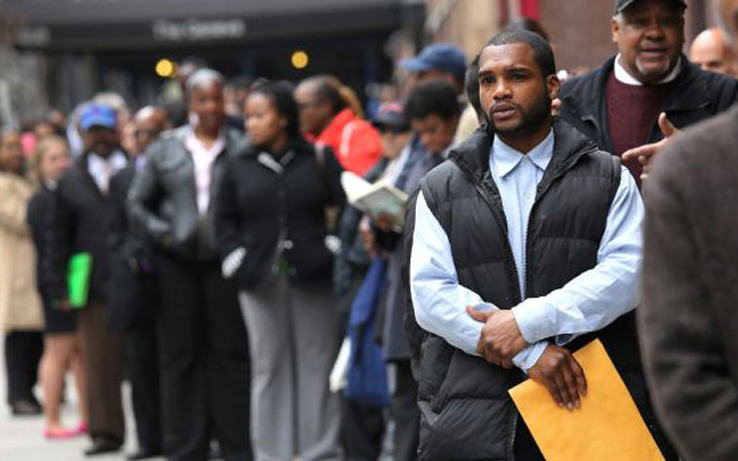(ThyBlackMan.com) Walking down a busy urban street, one cannot help but notice the number of “help wanted” signs that grace the front of many establishments. Restaurants, grocery stores, and retail establishments all seem to want workers. Many of them indicate their starting pay is “at least” $15 an hour. Some list other benefits in the window, including things like vacation time, employee discounts, and more.
Workers aren’t pounding down doors for these jobs, though. Part of the challenge is the uncertainty around COVID and its variants, especially the delta variant that seems far more deadly than the original virus. The other part of the challenge is that people simply aren’t being paid enough. While $15 an hour is twice the current minimum wage (and can we please raise that sooner rather than later), for some workers, it just isn’t enough, especially if they are supporting families. $15 an hour is $30,000 a year for a full-time, full-year job. The poverty line for a family of four is $26,500, so a $15 an hour job puts a family above the poverty line, but just barely.
People have been rethinking their employment situation and their options because of COVID. Thus, when the unemployment rate report was released on October 8, economists were disappointed to learn that only new 194,000 jobs were created in September. The projection was that more than 500,000 jobs would be created, in line with the job creation we’d seen before now. But this was before the delta variant.

The September unemployment rate, at 4.8 percent, seems low and would be a step in the right direction, except it is partly reflective of the fact that some people have been dropping out of the labor force. Employment in public education declined in September, and COVID is partly to blame for that. And when schools are not open, that means those who take care of children, primarily women, will not be working.
We keep hearing reports of labor shortages, especially in education. Some school districts are having trouble attracting enough substitute teachers. But, as they adhere to the laws of supply and demand, more substitute teachers may be interested in working. But school districts, to attract them, will have to pay more. Some are doing exactly that, with compensation up, in many cases, by as much as 50 percent. Other schools, interestingly, are creating opportunities for “full-time” substitutes, which means a teacher may be assigned to a school and float among classrooms when a regular teacher can’t come to school, either because of illness or child care emergencies. The same innovative thinking addressing the substitute teacher shortage ought to be used to attract more workers in the hospitality and retail industries. While some unions and workers have galvanized around the “Fight for $15”, fifteen dollars an hour may simply not be enough.
If we need more workers, employers should consider offering better wages or providing better working conditions and benefits. The fact that the minimum wage has remained constant for a decade speaks to the disrespect many have for workers, especially those at the bottom. Whatever happened to the concept of a living wage.
While the unemployment rate is falling, the racial unemployment rate gap remains. The unemployment rate for whites is 4.2 percent, compared to 7.9 percent for African Americans. And while 67.2 percent of white men are employed, the number is lower, at 60.7 percent lower for Black men. The situation is a bit different for women, since 54 percent of white women are employed, compared to 56.8 percent of Black women. The difference can be attributed to the fact that Black women may have both less flexibility in employment and more family financial responsibility given the number of Black families that are female-headed.
Our labor market just ain’t what it used to be, and in some ways, that’s a good thing. Employers need to address the so-called labor shortage by implementing innovation – paying people more, providing more flexibility for all workers, and offering more benefits, especially health care for workers. COVID reminds us that the “old ways” don’t work anymore. The pace of change is often glacial, but when employers want more workers, they will stop talking about the labor shortage and instead address the pay shortfall.
Written By Julianne Malveaux
FB Page; http://facebook.com/julianne.malveaux

















Leave a Reply